How to Plan a Trip to Sydney
As the capital of New South Wales, Sydney is Australia’s most significant and arguably boldest cosmopolitan metropolis. This bustling city exudes an exceptionally diverse food scene, a striking fusion of architectural design, and golden, glimmering beaches that epitomise an Aussie summer. Here’s How to Plan a Trip to Sydney.
Since a third of the city’s inhabitants are born overseas, Sydney oozes an incredible multicultural charm and essentially acts as a melting pot of Aboriginal, European, and Asian influences.
From the alluring Sydney Harbour to the iconic ocean baths and cobblestone, graffiti-graced alleyways, there’s something on every corner to suit everyone. And better yet, there’s an influx of hidden gems popping up day by day.
8-Step Planning Checklist
Before you can take the full plunge, work your way through these eight simple steps. Whether you’re planning for the summer, spring, winter or autumn, planning a trip to Sydney couldn’t be easier! Follow this checklist to begin the adventure of a lifetime!
Step 1: Determine the Destination Country & Cities
Step 2: Decide on the Trip Duration
Step 3: Figure out When is the Best Time to Visit
Step 4: Create a Travel Budget
Step 5: Book Your Accommodation (preferably 3 to 4 months in advance)
Step 6: Research & Organise Transport & Activities
Step 7: Get Your Documents in Order (Visa, Passport & Travel Insurance)
Step 8: Nail the Process with this Packing List
Best Time to Visit Sydney
Located in the Southern Hemisphere, Australia’s seasons are entirely opposite to the Northern Hemisphere. Sydney enjoys a warmer climate than its long-standing rival, Melbourne, with slightly milder winters from June to August. From November to February, the temperatures soar to scorching heights during the summer months.
If you want to plan a trip to Sydney, one of the best times to visit the capital is from September through November or from March to May. During these months, known as the off-season, the climate is rather pleasant, and there’s a hefty drop in crowds and prices. Another significant benefit of visiting during shoulder season is that the major airlines lower costs!
Language
As with the majority of states in Australia, English is the predominant language spoken. More than 300+ traditional Australian Aboriginal dialects and languages are spoken throughout the mainland and islands. In some respective communities, there are also several Asian languages spoken.
Best Things to Do in Sydney
New South Wales's notorious capital is renowned for the waterfront-hugging Sydney Opera House, Darling Harbour and the delectable cuisine scene. If you plan a trip to Sydney, you’ll be surprised at how much there is on offer.
Bondi Beach
Sydney, if not all of Australia, is world-renowned for its idyllic beaches. Straddling the harbour are a plethora of rocky coves with cobalt-blue water. Less than a quick, 15-minute drive from the city’s centre, Bondi Beach boasts a spectacular surf scene and café and food culture. If you’re coming to Sydney, Bondi Beach is a quintessential experience to tick off your Aussie bucket list.
If sweeping ocean vistas and getting your blood pumping sounds like your type-o-thing, there’s a series of coastal walks linking the beaches. Take your pick at the range of coastal walks along the cliffs. Choose between:
Bondi to Coogee
Bondi to Bronte
Rose Bay to Watson’s Bay
Watson’s Bay to Dover Heights
Chowder Bay to Balmoral Beach
Split to Manly
Jibbon Beach Loop Track
If you’re planning a trip to Sydney, my best advice is to get there early and, if possible, avoid the weekends due to the heavy crowds. If you want to escape the swarms of tourists, check out a few of Sydney’s other famous beaches. Head to:
Cronulla Beach
Manly Beach
Bronte Beach
Shelly Beach
Botany Bay
Wattamolla Beach
Coogee Beach
Freshwater Beach
Balmoral Beach
Broken Bay
Tamarama Beach
Clovelly Beach
Maroubra Beach
For avid surf-o-holics, don’t miss Collaroy, Dee Why, and Narrabeen.
Of course, if you’ve seen shots of Bondi, there’s no doubt you’d be familiar with the famous Bondi Icebergs Club.
If you’re wondering how to plan a trip to Sydney, this gem is a must-see. This landmark is an outdoor pool perched on the sea, fully functioning year-round.
As epic as the views and experience are, if you’re seeking out an experience that locals frequent or looking for something a little more low-key, head to the Bronte Baths. This whopper site features a saltwater rock pool that laps the southern end of Bronte Beach. Not only is the solidarity of the Bronte Baths so captivating, but it’s also free and open year-round—recommended!
Sydney Opera House
As a UNESCO World Heritage Site, the Sydney Opera House is, without a doubt, Australia’s biggest attraction. This unique architectural gem sits on the edge of the glimmering harbour and is said to resemble seashells or billowing sails.
Indulge yourself at one of the many world-class restaurants, hop on a cruise around the harbour, or stroll through its extensive interior, encompassing grand theatres, studios, exhibitions, a concert hall, and even a cinema.
Enthusiastic photographers should head down to Mrs Macquarie's Chair. If you’re interested in getting an in-depth guide about the history of the Sydney Opera House, you can book a Guided Walking Tour. The tours depart every half hour from 9 am through to 5 pm.
Sydney Harbour Bridge
The locally-acclaimed ‘Coathanger’, otherwise known as the Sydney Harbour Bridge, sits high up in the ranks of Australia’s most prominent landmarks. If you’ve read my post on Paris, you would know I’m a bit of a bridge freak. This absolute beast connects the north and south shores and is supported by massive double piers at each end, making it the world's largest steel arch bridge. Do yourself a favour and drive over the Sydney Harbour Bridge for some killer views of the blue water below.
For a more personal experience, you can walk along the bridge, and if you’re feeling up for a challenge, you can attempt to tackle the BridgeClimb. This experience is not something for the faint-hearted. With a 135-meter-high summit, breathtaking panoramic views of the city and harbour are guaranteed as a reward. The climb takes approximately 3.5 hours to reach the summit, with tours running from dawn to dusk. If the 3.5 hours seems a little too daunting, there is also a 1.5-hour and 2.25-hour climb available.
If you’re interested in getting a taste of the bridge’s history, there’s a museum at the southeastern end of the pier.
Darling Harbour
If you want to plan a trip to Sydney, you’ve probably seen the postcard-worthy picture of Darling Harbour. Acting as a social hub for both tourists and locals alike.
Sitting on the cusp of the waterfront, this pedestrianised precinct is lined with popular shops, exquisite restaurants, museums, and exhibitions. I’d recommend visiting Darling Harbour if you’re travelling with your family or small children.
Check out the WILD LIFE Sydney Zoo, the SEA LIFE Sydney Aquarium, the Powerhouse Museum, the Australian National Maritime Museum, the IMAX and 9D theatre, or hop on a harbour jet boat ride.
Observatory Hill
Observatory Hill is one of the best spots, with ample lookouts and viewpoints of Sydney Harbour. Just a quick 10-minute stroll from Circular Quay, Observatory Hill boasts some awe-worthy views that are worth the walk up.
Sitting atop the hill is the Sydney Observatory, which astronomy lovers will find intriguing. There is also a museum which is free to enter! Check out the Dudley Page Reserve, West Head Lookout, The Gap in Watson’s Bay, Balls Head Reserve in Waverly, or Milsons Point for other viewpoints.
Angel Place
Situated in a somewhat discreet alleyway off the frenzied George Street, Angel Place is home to an eclectic array of mismatched birdcages.
This art installation was initially intended as a temporary exhibit, but it has since become a fixed feature. The ‘Forgotten Songs’ piece represents the 50 species of native birds that once frequented the city. I hate to use this word, but the magical, Harry Potter-esque style of Angel Place makes it an Instagrammable hot spot.
Royal Botanic Gardens
Lying amidst the hustle and bustle of this multicultural hub, the Royal Botanic Gardens offers a slice of a serene oasis. Take the scenic stroll along the waterfront from the Sydney Opera House down to Farm Cove, where you’ll find more than 30 hectares blooming with entwining palm groves, soaring trees, orchids, and luscious ferns.
Be sure not to miss the Palace Rose Garden, Glasshouse Latitude 23, and Fernery. The best part? It’s completely free. Yeehaw!
Top tip: Pack a picnic and set yourself up on the hillside for sunset to watch the epic harbour views.
Grounds of Alexandria Sustainable Garden and Café
If you want to know how to plan a trip to Sydney, you can get a more local experience by heading to the Grounds of Alexandria Sustainable Garden and Café.
Nestled in the inner west city fringe, the Grounds of Alexandria straddles more than an acre of land and is undoubtedly rich in character and charm.
This space is truly innovative. Along with a sustainable garden consisting of vegetables, fruits, herbs, and colourful flowers, there’s a small animal farm, an artisan bakery and an array of cafés perfectly fit to meet friends.
You’ll be guaranteed decent coffee and wholesome food here, with well-trained baristas and chefs dominating the scene.
The Grounds of Alexandria hosts more than 80 stalls that offer gourmet food products and local custom creations. The Grounds of Alexandria is one of Sydney’s hidden gems and is home to coveted, photo-worthy masterpieces that’ll inspire you. My best advice is to avoid the weekends and head in on a weekday.
George Street
Australia’s ‘oldest street’, George Street, is one of Sydney’s most alluring precincts. This is where skyrocketing high-rise buildings incongruously collide with Romanesque-style historic sites. Be sure to head to one of the city’s architectural highlights, the elegant Queen Victoria Building.
With sophisticated domes, colourful stained glass windows, mosaic flooring, and high-end stores, the Queen Victoria Building is also linked by underground arcades. The Sydney Town Hall and the neo-Gothic St. Andrew's Cathedral are nearby. Shopaholics, you’ll want to make your way here. There are designer boutiques and jewellery stores aplenty in the Strand Arcade and Pitt Street Mall.
Best Museums in Sydney
Australia’s capital harbours various fascinating museums where you can discover almost anything and everything. If you want to plan a trip to Sydney, add some of these museums to your itinerary:
Art Gallery of New South Wales (modern art)
Museum of Contemporary Art Australia at The Rocks
Nicholson Museum (antiquities)
Australian National Maritime Museum
White Rabbit Gallery (contemporary Chinese art; it also has a teahouse)
The Rocks Discovery Museum (local history)
Hyde Park Barracks Museum (local, criminal, and judicial history)
Australian Museum (natural history)
Justice and Police Museum (criminal museum in an old courthouse)
Museum of Sydney (local history)
Sydney Jewish Museum
Best Markets in Sydney
If you’re planning a trip to Sydney, don’t miss the market scene in Australia’s capital city. Sydney's market scene is hip and happening, from vintage finds, farm-fresh fruits and veggies, and local arts and crafts. There’s a ton to choose from, so here’s a handful of some of the best markets this exuberant city offers.
The Rocks Market
Paddington Markets
Glebe Market
Blak Markets
Rozelle Collectors Market
Orange Grove Organic Market
Marrickville Organic Market
Bondi Farmers Markets
Kirribilli Art, Design & Fashion Markets
Chinatown Night Market
Blue Mountains National Park
Australia’s landscape and native wildlife are rich in the city's surrounding areas. And the Blue Mountains National Park is undoubtedly one of the most appealing day trips. The Blue Mountains National Park is home to ancient sandstone, narrow ridges and plunging gorges framed by jaw-dropping cliffs, which have been formed over the millennia to make for an unforgettable experience.
If you want to plan a trip to Syndey, the Blue Mountains is a bucket list opportunity! Don’t miss out on seeing the sublime rock formations of the Three Sisters. This is best viewed during the sunrise or sunset! There’s an array of hiking opportunities with unspoilt views overlooking the valley, roaring waterfalls, and dense forests.
The Blue Mountains National Park is a nature lover’s delight. Avid adventurists, be sure to check out the following hikes:
Grand Canyon Walk: 6km hike (roughly 2.5 hours)
Katoomba Falls: 4km hike (roughly 2-3hours)
Six Foot Track: 44km hike (approximately 2-3 days)
The Blue Mountains National Park is free to visit, and it only takes a 90-minute train ride from the city’s centre.
If you have enough time, consider adding the following locations to your Sydney bucket list.
Hot-air balloon in Camden Valley
Royal National Park
Dharawal National Park
Ku-ring-gai Chase National Park
Kamay Botany Bay National Park
Wattamolla, Royal National Park
Port Jackson Bay
Wendy’s Secret Garden
St Mary’s Cathedral
Best Activities in Sydney
If you’re hunting for top-rated attractions in Sydney, look no further. Here is the best of what Sydney has on offer:
What to Eat and Drink in Sydney
As a multicultural metropolis, you can expect Sydney’s food scene to be high up in the ranks. With a range of just about everything, you’ll find ethnic eats, food trucks, cafes specialising in brunch and eclectic flat white coffees, B.Y.O. Asian eateries, and some of the world’s most famous restaurants.
If you want to plan a trip to Sydney, be sure to factor in time (and belly room) for the cuisine scene. Foodies swarm to this destination year after year!
If you're a first-time visitor to Australia, I suggest indulging in some of the country's traditional dishes such as Vegemite on buttered toast, Eggs Benedict, Lamington or Pavlova cake. You can also grab a pack of Tim Tams from a supermarket - chocolate lovers will thank me later.
Where to Stay in Sydney
New South Wales’s capital city is sprawling with sublime sites. From the incredible beaches and World Heritage sites to the world-class dining scene, it’s easy to see why this is one of Australia’s most-visited cities. Boasting a diverse spectrum of accommodation options, something unique suits all preferences and budgets. When choosing your accommodation in Sydney, consider factors like your budget, preferred environment and access to public transportation. Here are some of the best places to stay in Sydney.
The Rocks
Situated at the southern end of the Sydney Harbour Bridge, The Rocks is home to an alluring array of historic pubs, bustling markets and significant attractions. This cosmopolitan area is known for its cobblestone streets and charming heritage buildings. The Rocks boasts some of the city’s best hotels and a vibrant nightlife.
Located north of Sydney’s CBD, this neighbourhood has the best waterfront views. The Rocks offer a combination of boutique hotels, bed and breakfasts and historic homes. If you plan to visit Australia, this is one of the best places to stay in Sydney.
Darling Harbour
Darling Harbour is a lively neighbourhood home to major tourist attractions like the Sydney Aquarium, IMAX and the Australian National Maritime Museum. This vibrant waterfront precinct is situated just west of the CBD and hosts ample dining opportunities, making it a powerful magnet for foodies. Darling Harbour presents a spectrum of hotels, restaurants, entertainment venues and attractions best suited to families, couples and first-timers.
Bondi Beach
Known for the famed surf beach and Hall Street cafes, Bondi Beach hosts a range of budget-friendly to luxury accommodation options.
Situated around 7 km east of the CBD, Bondi boasts coastal vibes, laid-back living and beautiful beach views. With a collection of cute cafes, buzzing bars and gnarly surf shops, this spot makes for a quintessential Aussie experience.
If it’s your first time planning a trip to Sydney, Bondi is an ideal place to stay. This is one of the best areas for families and couples after easy beach access.
Kings Cross
Typically known as the suburb that never sleeps, Kings Cross is lined with nightclubs and eateries rich in character.
Kings Cross hosts the city’s cheapest hostels and has been popularised by backpackers and budget travellers. Kings Cross is where the action is if you want to get loose, get rowdy, and break it down on the dance floor.
Manly
Located north of Sydney, Manly is renowned for its pristine beach, killer waves, surfing opportunities and rowdy nightlife. This beachside suburb is nestled on the northern side of Sydney Harbour and oozes laid-back living. Whether you want to try your luck in the water sports scene or eat yourself into a food coma, Manly makes for a stellar sojourn.
As it’s on the outskirts, there’s a distinct vibe compared to the heart of the metropolis. With various eateries and affordable accommodations, there are also some of the best coastal walking trails. With beachfront hotels, holiday apartments and boutique accommodations, this is one of the best places to stay in Sydney. Manly is fit for backpackers, budget-friendly travellers, families and couples alike.
Coogee
Situated in eastern Sydney, Coogee is brimming with trendy cafes and eateries and a more local beach scene compared to busy Bondi. Coogee is home to safe, calm waters, making it a great destination with a family-friendly vibe. You can travel into the city on public transit in less than half an hour, so it’s conveniently located if you plan to explore more. Coogee is a top choice if you’re wondering where to stay in Sydney for an authentic Aussie experience.
Surry Hills
Surry Hills is Sydney’s creative hub, with hip cafes, fashion boutiques, art galleries, and music venues all the roar. Sitting southeast of the CBD, Surry Hills is the spot for all you shopaholics out there. If you want to taste local life, this is the neighbourhood for you.
If you want to plan a trip to Sydney, Surry Hills is a suitable place to stay for a more residential experience. Surry Hills is one of the best places to stay in Sydney, Australia for foodies, fashionistas, backpackers, and budget-friendly travellers.
Sydney CBD
The CBD is centred in the beating heart of Sydney and offers convenient access to major attractions like the Sydney Opera House, Sydney Harbour Bridge and Circular Quay. Strung with a slew of shopping and dining opportunities, the CBD offers easy transportation. You'll find a mix of hotels, luxury establishments and affordable hostels.
Paddington
Paddington poses a more edgy, artistic side to Sydney’s typical tourist scene. With a massive haul of happening bars, this neighbourhood in Sydney is home to the trendy Paddington Markets. Paddington is brimming with a vibrant variety of boutiques, shops, quirky cafes and bustling bars. This is one of the top neighbourhoods in Sydney, especially if you’re a shopaholic, foodie or travelling in a couple.
Top Hotels in Sydney, Australia:
How to Get Around Sydney
Sydney is dotted with an efficient, reliable network of transport options, making travelling throughout the centre and out to regional NSW affordable. Getting around Sydney is relatively easy, thanks to the available trains, buses, ferries and light rail. So, if you want to plan a trip to Sydney, here’s everything you need to know about how to get around.
Train, Bus and Light Rail
The train system covers an extensive network throughout the city. Linking the surrounding suburbs, key attractions and places like the CBD, getting around by train is quick and efficient for long-distance travel. Sydney’s bus system operates across the entire metropolitan area, including the CBD, outer suburbs and popular tourist attractions. Buses are convenient and offer access to specific areas that aren’t connected by train.
The Sydney Light Rail network, also known as the Inner West Light Rail, links the CBD with the inner western suburbs. This public transport in Sydney is a point of entry to notorious areas like Darling Harbour, Pyrmont, Glebe and Leichhardt.
Sydney uses a ticketing system called Opal, which can be used to pay for travel on public transport in Sydney, the Blue Mountains, the Central Coast, the Hunter and the Illawarra. All you have to do is add money before you board.
Ferry
Ferries are another way of getting around New South Wales’s capital city. If you want to plan a trip to Sydney, this is a scenic mode of transport to consider. Ferries connect the CBD with various locations like Manly, Taronga Zoo, Darling Harbour and Parramatta. Not only will you get to enjoy the breeze, but you’ll also bask in breathtaking views of the Sydney Opera House and Harbour Bridge.
Taxi and Rideshare
In Sydney, taxis are widely available throughout the city and surrounding suburbs. If you’re a budget traveller, you can consider rideshare services like Uber and Ola to save some money.
Rent a Car, Motorbike or Scooter
Renting a car, motorbike, or scooter is an ideal option that allows you to travel at your own pace. Hiring a vehicle will enable you to travel to the surrounding areas, hidden beaches and national parks. Several car rental companies are located throughout Sydney, and the only thing to note is that Sydney traffic can get intense. Head out early to ditch the traffic congestion and avoid travelling during peak hours (6 am - 10 am, 3 pm to 7 pm).
Cycling and Walking
Who says you can’t sprinkle a bit of good, old-fashioned walking into your journey? If you want to plan a trip to Sydney, you can consider walking or cycling around the city. While not all of the attractions are closely located together, you can consider making various stops, walking one way, and then catching transport home. Easy!
Sydney is home to an extensive network of cycling paths and pedestrian-friendly areas, and scenic spots like the Sydney Harbour foreshore are better seen on foot.
Sydney Airport
Situated just 8km from the city’s CBD, the Sydney International Airport (SYD) is a roughly 30-minute drive. The station is located at the terminal's northern end and is accessible from the ‘Arrivals’ level. You need to purchase an Opal Card from the station to use this service. If you’re planning a trip to Sydney, here’s everything you need to know about Sydney Airport.
As Australia’s busiest airport, Sydney Airport is home to three main passenger terminals: Terminal 1 (T1) for international flights, Terminal 2 (T2) for domestic flights operated by Virgin Australia, and Terminal 3 (T3) for domestic flights operated by Qantas and other airlines. The airport has a huge haul of facilities and services for travellers, including cafes, currency exchange offices, duty-free shopping, ATMs, baggage services and more.
Here’s how to get to/from Sydney Airport:
Train: The Airport Link train offers a quick and convenient way to travel between Sydney Airport and the city centre. The stations are situated underneath the terminals and have services that run every 10 minutes during peak times. The Airport Link takes around 15 minutes to arrive in the city. Talk about speedy!
Bus: A panoply of public buses link Sydney's airport and outer suburbs. The bus stops are all located outside the terminals and are the most cost-effective option.
Taxi and Rideshare: Taxi and Uber are available at designated ranks outside the terminals. Just follow the signs to the designated pick-up areas. Taxis can cost up to $45-$55 one way, so if you’re a budget traveller or backpacker, opt for a rideshare service.
Sydney Travel Tips
Swimmers should stay between the red and yellow flags. Volunteer lifeguards patrol the surfing beaches in the Pacific during the summer. Don’t underestimate the power of the ocean, especially in Australia! This is nothing like the Mediterranean.
For a hassle-free introduction to Sydney’s biggest attractions, book a Sydney and Bondi Hop-On Hop-Off Bus Tour. Tickets are valid for 24 or 48 hours, and travellers can get off and on the bus as they please.
If you’re planning a trip to Sydney, you can save money on transport by purchasing the Opal Card. The card is free; you simply need to load it with cash before hopping on the PTV system.
Bring a reusable water bottle with you. Australia’s water is safe for consumption, and you can save a lot of money by avoiding plastic bottles altogether. Plus, it’s the better option for the environment!
If you want to plan a trip to Sydney, budget enough money for food. Eating out in Sydney can be expensive, especially on a tight budget. I’d recommend heading to one of the major supermarkets, Woolworths or Coles, and cooking in your hostel/hotel/Airbnb/etc.
Whether you’re a fan of exploring Sydney’s glimmering harbour, unique architectural gems, happening food scene, or off-the-radar adventure, I assure you that these spots will not disappoint.
Be sure to add Sydney as a destination to your Travel Bucket List. This comprehensive guide on How to Plan a Trip to Sydney can kick the hassle out of your next getaway. So, what are you waiting for?
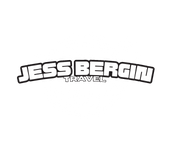
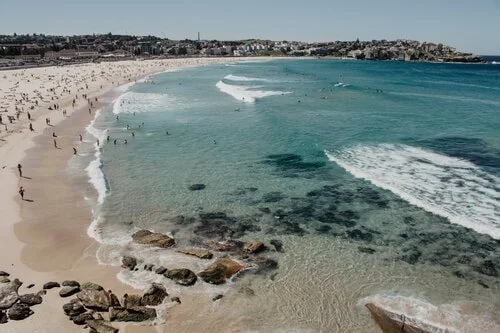

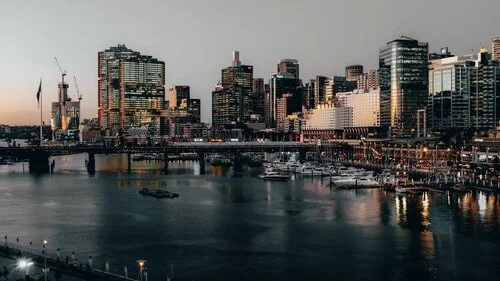
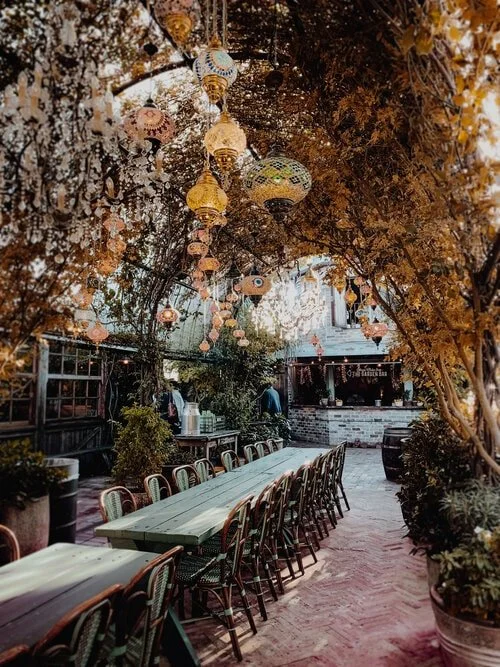
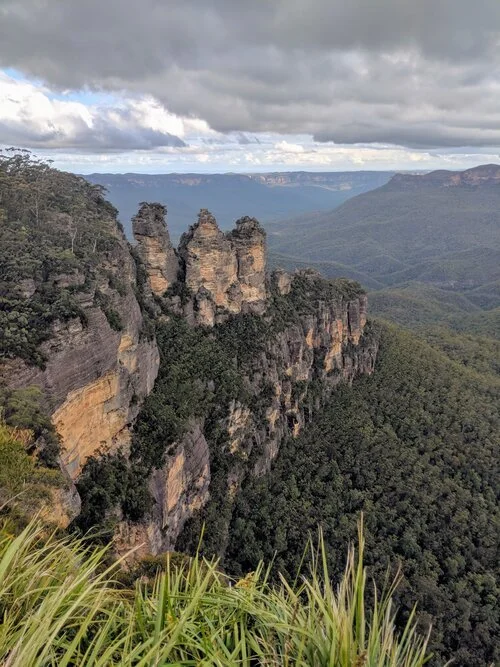
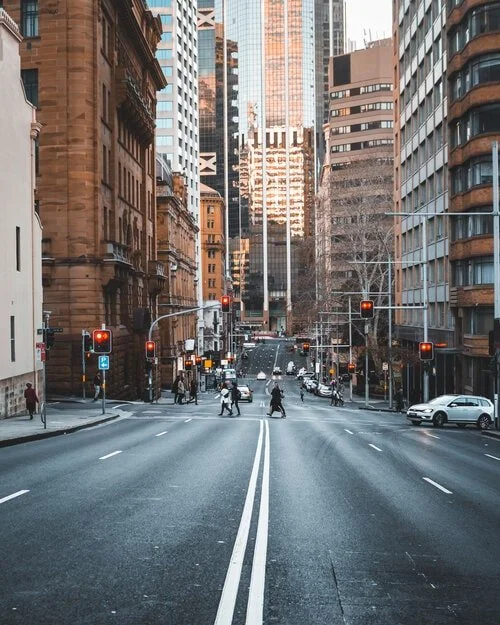
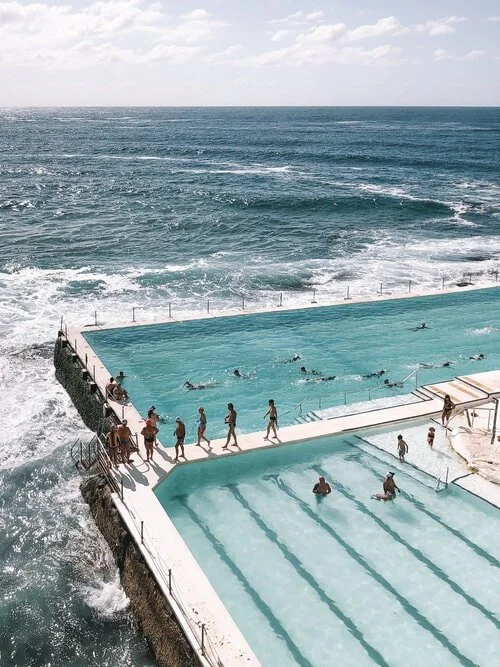
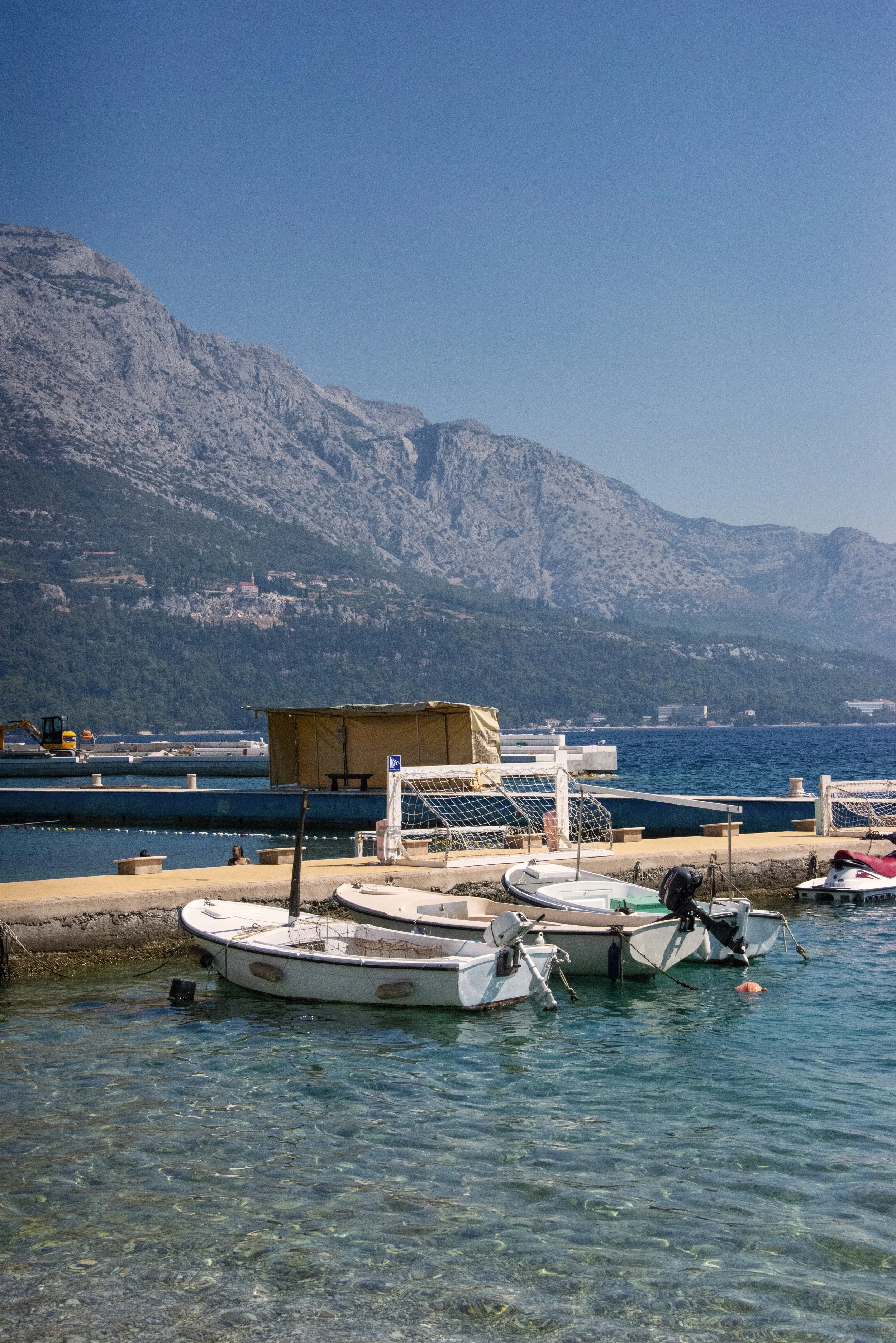
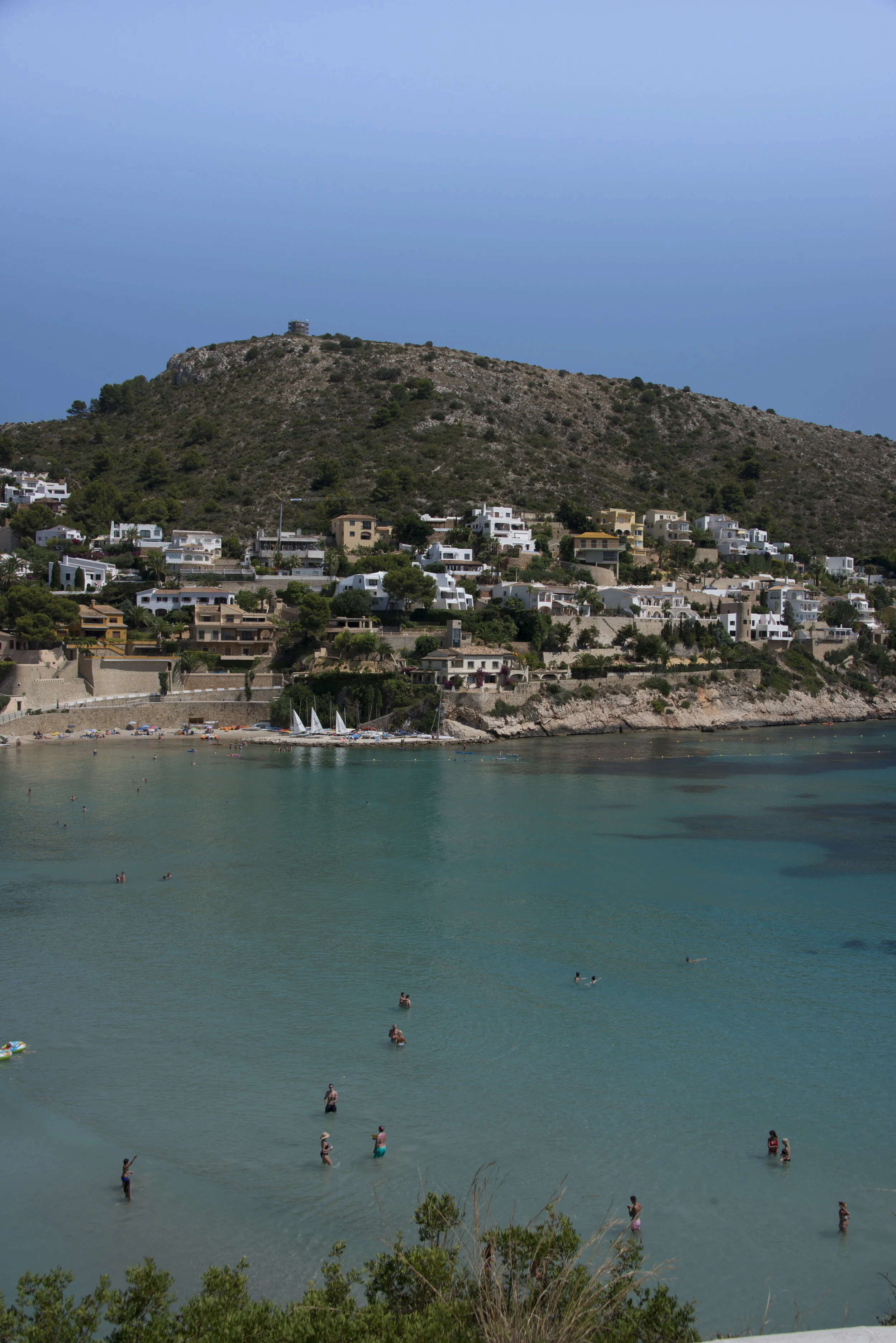







Situated at the foothills of the Sierra Nevada mountain range, this city boasts something for adventure, architecture and nature lovers alike. From the ancient Alhambra Complex to the saline white streets of Albacín, this Spanish city is steeped deep in charm. If you’re wondering how to plan a trip to Granada, look no further!